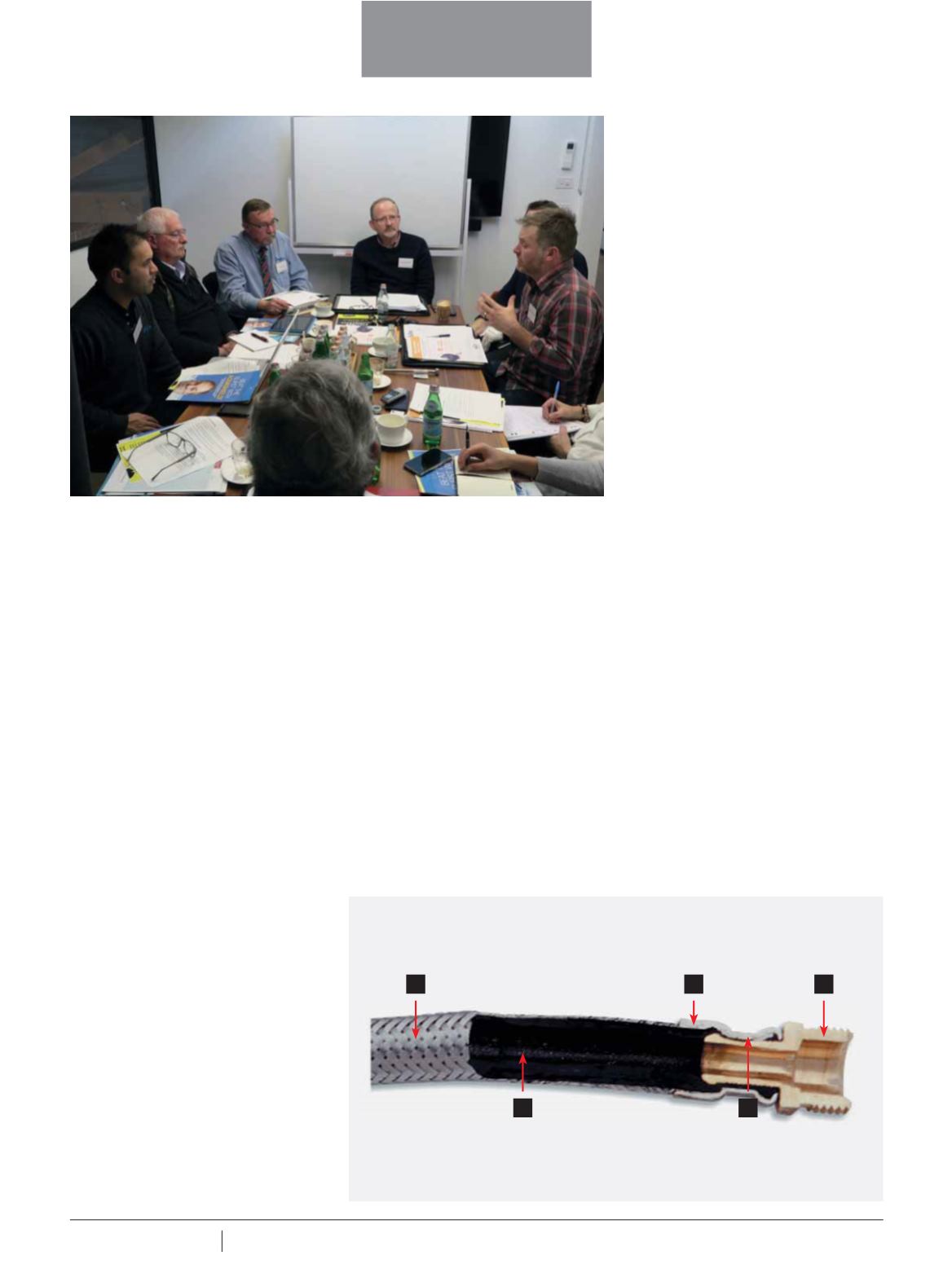

1 8
PLUMBING CONNECTION Summer 2017
Flexible hoses are very versatile and
significantly reduce the time it takes
to hook-up hot and cold water pipe
appliances, such as taps, dishwashers
and water heaters. They also overcome
alignment problems and significantly
reduce labour costs and noise in pipe
work, as well as eliminate brazing,
welding, cutting, re-shaping and waste.
Over time, the popularity of these
connectors has lead to them being
included with the supply of many
tapware ranges, whether mixer or hob
mounted, and other fixtures. There are
now approximately seven million flexible
connectors sold annually in Australia
and some of these are low-cost
products from as little as $3-$5 from
hardware stores.
Recent data released by insurance
companies, including NRMA Home
Insurance and general insurers IAG,
QBE and Budget Direct, shows flexible
braided hoses that have leaked or split
are the number one cause of internal
flooding in Australian homes.
NRMA Home Insurance says the
average claim for escape of water in
2016/2017 was $4,818 (excluding
excess and GST) but there have been
reports of some claims costing tens or
hundreds of thousands of dollars.
IAG executive manager for short tail
claims Cheryl Chantry says properties
between 11 and 30 years old are most
likely to suffer an escape of water claim
as flexible hoses generally only last 10
years. Yet the experiences of attendees
at the workshop suggest some flexible
hoses are bursting within a couple of
months of installation.
Working out why this is happening
and how it can be prevented isn’t as
simple as pinpointing one cause and one
solution.
It’s important for the plumbing
industry to start a discussion and begin
educating plumbers, manufacturers,
TAFEs, insurers, regulators, government
and consumers about the risk of flexible
hose burst failure.
BURSTING AT THE SEAMS
Based on analysis of burst flexible
connectors, it seems to be the braided
stainless steel component of the
product that is failing.
The rubber tube lining in flexible
connectors expands when pressurised
and the braided layers of stainless steel
are designed to prevent this tube from
further expansion. If the stainless steel
fails, the rubber inner core will expand
to a point where it bursts.
“This is primarily caused by a slow
leak at the connection point, which runs
down the hose into the braided stainless
steel and leaves a deposit of chloride.
Over time these chloride levels increase
in the deposit creating pitting corrosion.
The pitting locally reduces the cross-
section of the wires to a point where
overload failure occurs (due mostly to
the hydrostatic water pressure),” says
Metropolis Solutions forensic plumber
Russell Kirkwood.
Chloride is present in natural waters
from the dissolution of salt deposits and
as a result, Australian drinking water has
low chloride levels of up to 350mg/L.
Abey Australia general manager
Geoff Anderson says that generally
the 60/60/60 rule will enable stress
corrosion cracking to occur. This is
where water temperature is 60° with
60ppm of chloride and 60% of yield
stress.
COVER STORY
FLEXIBLE BRAIDED HOSES
In July Plumbing Connection hosted a workshop with industry stakeholders to
discuss the issue of bursting flexible braided hoses.
FLEXIBLE STAINLESS STEEL CONNECTORS
COMPRISE OF THE FOLLOWING
1:
Innertube of either EPDM for water or Nitrile for fuel gas.
2:
304 stainless
steel braid.
3:
End fittings made from either DR brass, free machined brass or
chromed steel.
4:
304 stainless steel ferrules.
5:
Crimping.
1
5
2
4
3
















